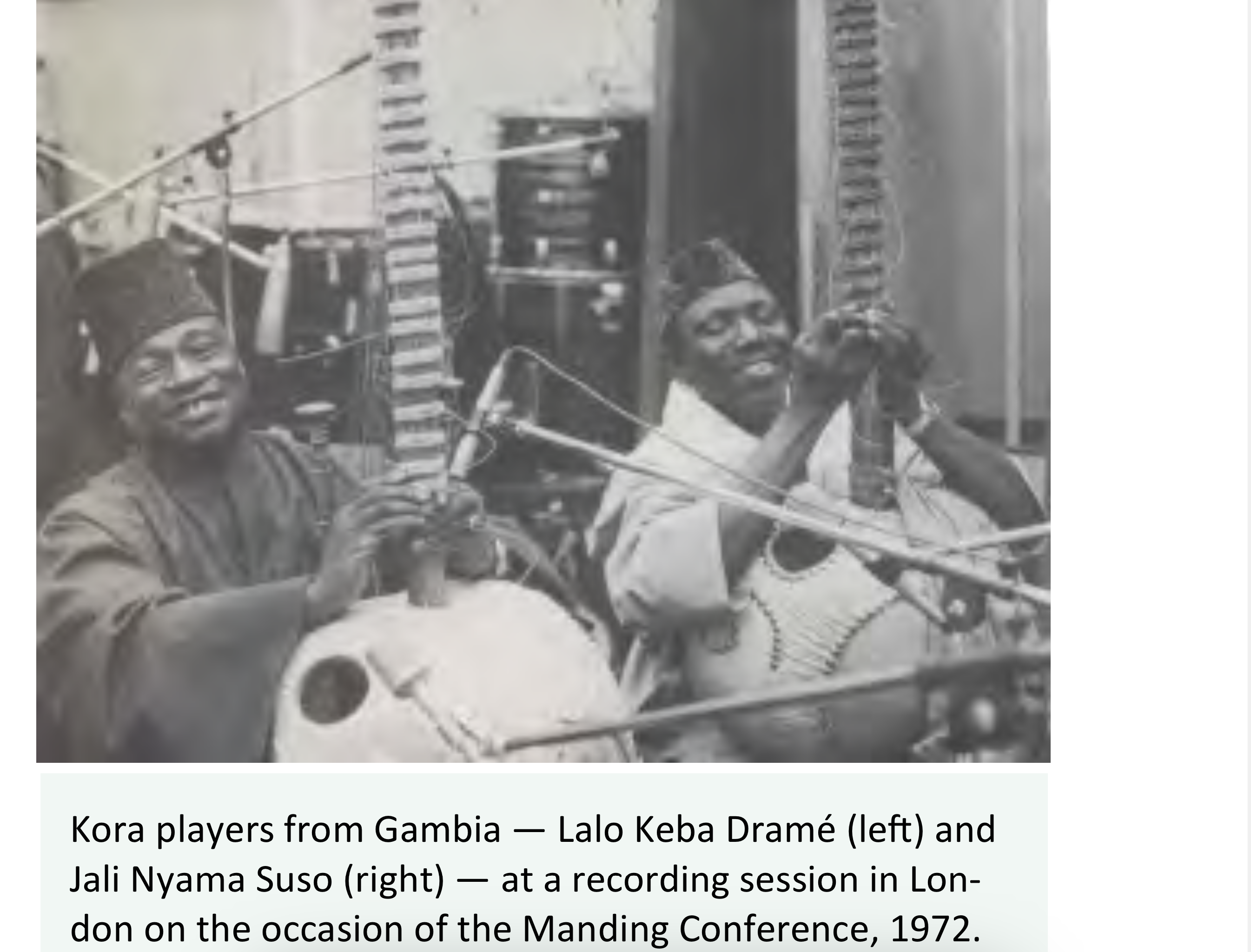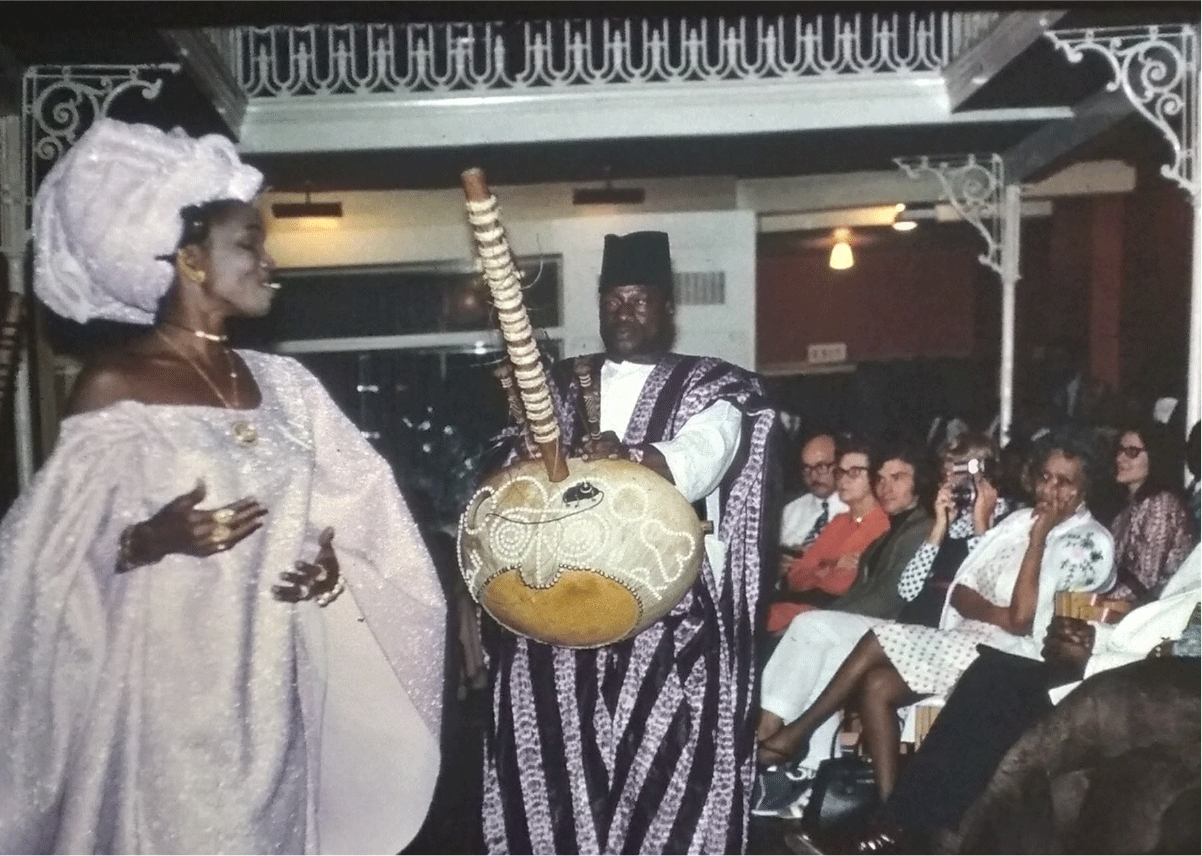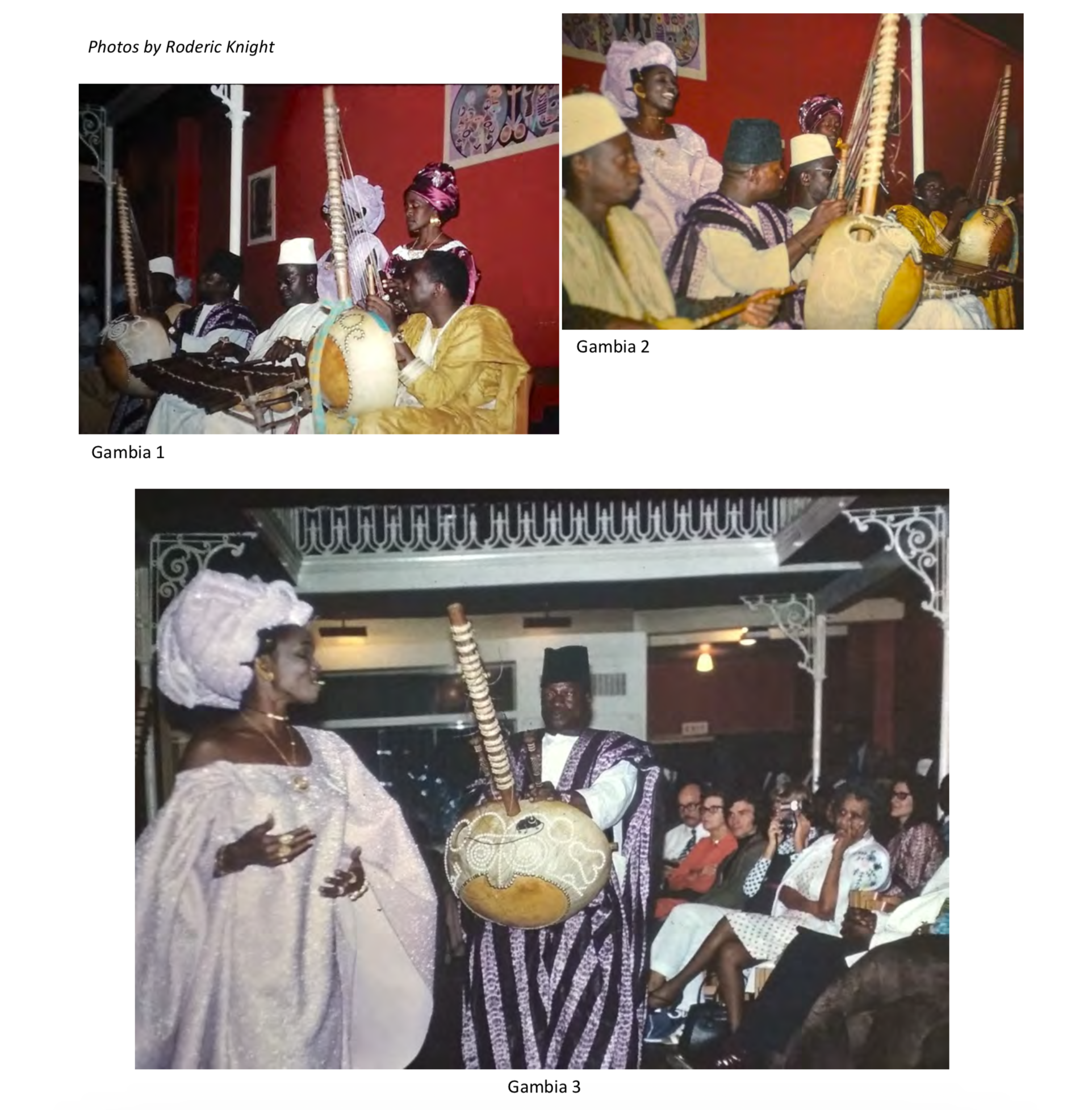Lalo Kebba Drammeh was a legendary kora player from The Gambia, widely regarded as one of the greatest Mande koramasters of the 20th century. Born, in Kiang Kwinella in the lower river region, he is regarded as the greatest Gambian kora maestro. His virtuosity and deep understanding of traditional Mande music made him a highly respected griot, preserving and passing down centuries-old oral traditions.
He was instrumental in popularizing the kora beyond The Gambia, influencing many musicians across West Africa and beyond. His music was deeply rooted in the classical Mande repertoire, yet his improvisational skills and technical mastery set him apart. His ability to blend intricate melodies with profound storytelling made him a sought-after performer and mentor to many younger griots. He adapted the djembeseng, Manding polyrhythmic very involving given by the djembe drums, to the kora.
He became famous for adapting to the Kora of Djembeseng (a dancing rhythm played on Djembe drums), creating a revolution in Kora music. At a very young age, Lalo Kebba became famous in Jaliya by enlivening weddings. Jaliya is the Mandinka word for griot. Griots (jèlí, plural jèlílu, feminine jèlímuso); are bards, loremasters, and praise-singers whose functions are (his)story-telling, speaking about lineages, singing and playing music as they want it to be heard and listen to.
His popularity came with programs on the National radio. Soon his reputation passed across the Gambia River spreading in all countries of the Manding area. As his popularity continued, he decided to settle in Senegal, in the Casamance region. While in Casamance he also began singing about the history of Casamance and was then regularly invited to be on the air with Radio Senegal. He gained international notability in 1967 with Bamba Bodian
During his time in Senegal, Lalo worked with the Senegalese group Daniel Soran under the guidance of Foday Brama Sayang. His exceptional kora playing and singing captivated many enthusiastic listeners, earning him a devoted fan base that included the late Senegalese president Léopold Sédar Senghor and Sir Dawda Kairaba Jawara, The Gambia’s first president (1970–1994).
Lalo’s talent and artistry were so highly regarded that he frequently traveled with Sir Dawda on official trips worldwide. His unique style not only impressed President Senghor but also inspired Senghor to grant him Senegalese naturalization ahead of the International Conference on Manding Studies, held in London from June 30 to July 3, 1972, at the School of Oriental and African Studies (SOAS). Senghor had hoped Lalo would perform under the banner of Senegal, but Lalo respectfully declined.
Meanwhile, President Jawara had already included Lalo in his delegation for the conference, and Lalo proudly accepted, choosing to represent The Gambia instead. His performance at the event was so outstanding that The Gambia emerged as the winner of the musical performances during the ceremony.
One of his famous songs was a praise song in honor of a rich person benefactor, and his wife Coura Mbissane. According to a family member’s account, after marrying Coura, he chose not to take any additional wives, despite the Muslim tradition allowing polygamy.
Style and Contributions
• He was known for his precision, speed, and fluidity on the kora.
• His compositions and interpretations of traditional pieces remain influential in Mande music.
• His performances captured the essence of griot storytelling, reinforcing the social and historical significance of the kora in West African culture.
Drammeh’s impact on Mande music continues to be felt today as his recordings and teachings inspire a new generation of kora players. His contributions to Gambian kora music are profound, and while commercial recordings of his work are limited, several resources can help you explore his musical legacy:
1. Online Audio Recordings:
• SoundCloud: A track titled “LALO KEBBA DRAMMEH 01 Track 01” is available on SoundCloud. This recording provides a glimpse into his kora playing style.
2. Video Performances:
• YouTube: There are several videos on YouTube showcasing Lalo Kebba Drammeh’s performances:
• “Lalo Kebba Drammeh.” This video offers a visual and auditory experience of his kora artistry.
• “Lalo Kebba Drammeh.“- Jula jekeré.” Another performance highlights his musical style.
• “Lalo Keba Dramé. Sutukung
3. Archival Recordings:
• Smithsonian Folkways Recordings: While not featuring Drammeh directly, albums like “Gambia’s Music, Vol. 1” and “Kora Music from the Gambia” provide context to the musical environment he was part of. These collections include field recordings from The Gambia, showcasing traditional kora music.
4. Gambian Music Archives:
• Radio Africa: The Gambian vinyl discography on Radio Africa lists various recordings from Gambian artists. Exploring this resource might lead you to more information or related artists from Drammeh’s era.
5. Local Resources in The Gambia:
• National Centre for Arts and Culture (NCAC): Based in Banjul, the NCAC houses archives and may have recordings or information on Lalo Kebba Drammeh. Contacting them could provide access to rare materials.
• Gambian Radio Stations: Local stations occasionally air traditional music programs that feature historical recordings. Reaching out to them might yield opportunities to hear Drammeh’s performances.
While direct recordings of Lalo Kebba Drammeh are scarce, these resources offer pathways to appreciate his influence and the rich tradition of Gambian kora music.
Complement this piece with the enduring history and legacy of the kora.






